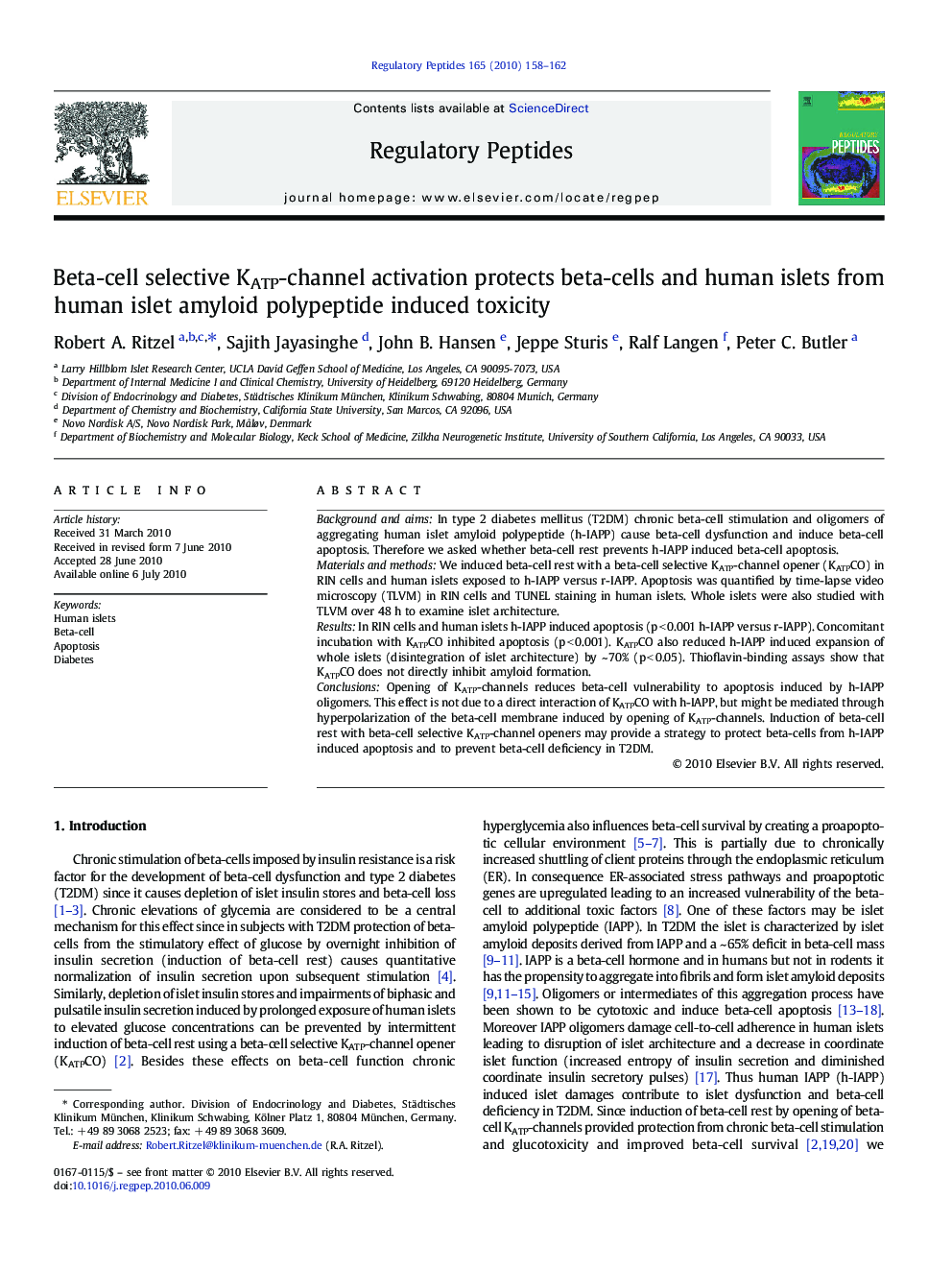| Article ID | Journal | Published Year | Pages | File Type |
|---|---|---|---|---|
| 2022670 | Regulatory Peptides | 2010 | 5 Pages |
Background and aimsIn type 2 diabetes mellitus (T2DM) chronic beta-cell stimulation and oligomers of aggregating human islet amyloid polypeptide (h-IAPP) cause beta-cell dysfunction and induce beta-cell apoptosis. Therefore we asked whether beta-cell rest prevents h-IAPP induced beta-cell apoptosis.Materials and methodsWe induced beta-cell rest with a beta-cell selective KATP-channel opener (KATPCO) in RIN cells and human islets exposed to h-IAPP versus r-IAPP. Apoptosis was quantified by time-lapse video microscopy (TLVM) in RIN cells and TUNEL staining in human islets. Whole islets were also studied with TLVM over 48 h to examine islet architecture.ResultsIn RIN cells and human islets h-IAPP induced apoptosis (p < 0.001 h-IAPP versus r-IAPP). Concomitant incubation with KATPCO inhibited apoptosis (p < 0.001). KATPCO also reduced h-IAPP induced expansion of whole islets (disintegration of islet architecture) by ~ 70% (p < 0.05). Thioflavin-binding assays show that KATPCO does not directly inhibit amyloid formation.ConclusionsOpening of KATP-channels reduces beta-cell vulnerability to apoptosis induced by h-IAPP oligomers. This effect is not due to a direct interaction of KATPCO with h-IAPP, but might be mediated through hyperpolarization of the beta-cell membrane induced by opening of KATP-channels. Induction of beta-cell rest with beta-cell selective KATP-channel openers may provide a strategy to protect beta-cells from h-IAPP induced apoptosis and to prevent beta-cell deficiency in T2DM.
